Today, it is modish to be part of a yoga class, to post stories on Instagram while striking an impressively complex asana in a bralette and crop-top paired with neon yoga pants, to bond over green tea and yoga bars after a strenuous session at the studio and have subscriptions to yoga studios, not ashrams, says Manavi Kapur.
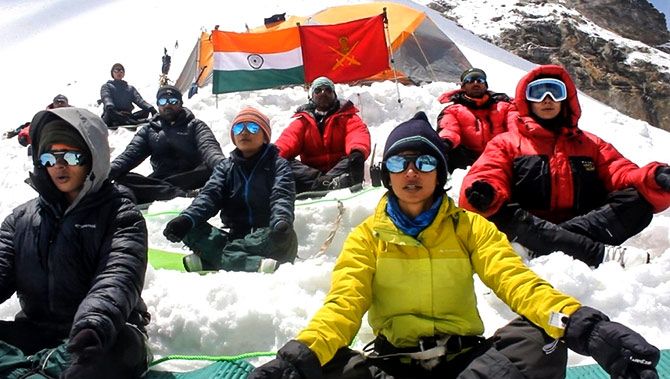
"Three more reps, come on!" urges a burly gym instructor at an elite Delhi gym.
He is pushing his client, a 33-year-old banker, to complete the leg-press routine, music thundering from the speakers by way of support.
Thirty minutes later, the instructor undergoes a transformation.
A gentler person is now talking to his students in subdued tones about the day's regimen before he begins the gym's most popular class -- hatha yoga.
Men and women queue up outside the studio because space is limited.
"I have the day off today, but I thought I'd at least do yoga," says a petite, middle-aged woman, dressed in a stylish racer-back top and printed tights.
Yoga is finally cool in the land of its birth.
Gone are the days when it was the mainstay of the archetypal dhoti-clad sadhu and yogini.
It has moved beyond the everydayness of Baba Ramdev and his yog shivirs (yoga camps), the spiritually inflected yoga of Sri Sri Ravi Shankar or the corporate-style wellness pushed by Jaggi Vasudev aka Sadhguru.
And the change is not merely a mimicking of the successful Western formula, which made yoga work in ways that attracted young, urban professionals to this form of mind-body exercise.
Today, it is modish to be part of a yoga class, to post stories on Instagram while striking an impressively complex asana in a bralette and crop-top paired with neon yoga pants, to bond over green tea and yoga bars after a strenuous session at the studio and have subscriptions to yoga studios, not ashrams.
It's a circuitous route that an exercise form has taken to return to its 'roots', adopting and adapting along the way from the West's talent for cultural appropriation.
It is also a well-charted path, rewarding for businesses and palatable to a youth that is both apprehensive of and attracted to the idea of 'Make in India'.
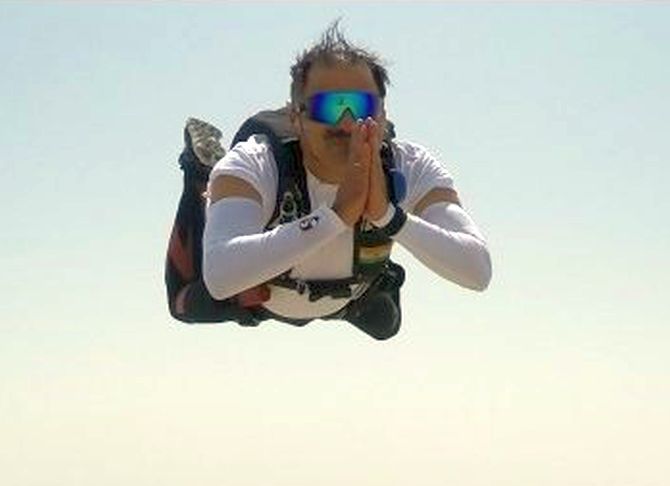
The sudden busyness in the yoga 'industry' can be traced to one day in 2015 -- the first International Day of Yoga held on June 21.
"The first Yoga Day was largely just a celebration. But seeing the prime minister in a white track-suit with the tri-colour scarf around his neck really gave the idea of yoga a huge boost," says Kshetrimayum Doren Singh, assistant research officer (yoga) at the Morarji Desai National Institute of Yoga in New Delhi.
This year's 'fitness challenge' on Twitter and Prime Minister Narendra D Modi's subsequently viral yoga video have only lent succour to this trend.
Singh says enrolment to the institute has multiplied because of the promise that a career in yoga now holds.
"Our diploma course in yoga used to see a maximum of 50 students per batch. Today, that number is close to 150," he says.
After Yoga Day, the institute introduced a month-long foundation course, where students attend two-hour classes every evening at five centres in Delhi.
"People sometimes queue up a day before admissions open. Nearly 250 students take this course every month."
He says it is hard to estimate how many trainers are certified annually across India because the system still works informally and yoga institutes have mushroomed across the country.
"Unfortunately, quality is no longer the focus. It has become purely about numbers."
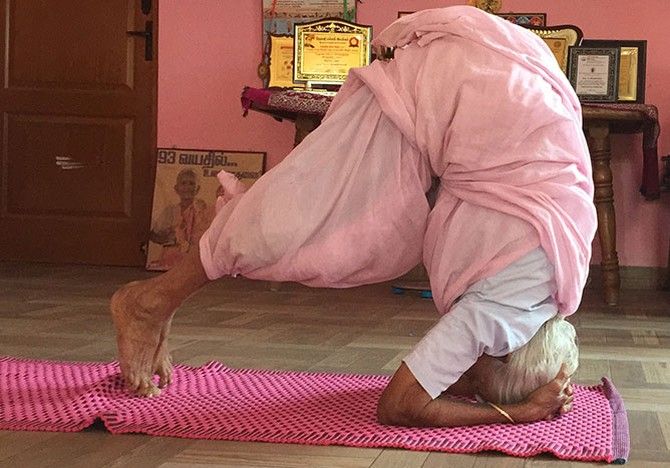
Naveen Kumar, director of yoga portal BookMyYoga, agrees with Singh. He believes the market teems with yoga teachers, but that only 20 per cent hold a full-fledged degree in yoga.
This is, of course, a simple function of the surge in demand.
"Where we used to get 10, 15 enquiries for yoga classes per day till four years ago, that number is easily over 100 today," he says.
Kumar began his initiative in 2009 with a team of 13 yoga enthusiasts.
Three years ago, he noticed a rise in the requests for personal sessions and decided to create a registry of yoga trainers.
BookMyYoga now lists over 130 yoga trainers. The Web site's growth is consistent with a larger market trend.
UrbanClap, an online platform for home services, has seen a three-fold rise in the number of requests for home yoga trainers.
Where it was 3,000 per month in 2016, it now stands at an approximate 9,000 per month.
UrbanClap now has over 7,000 trainers registered on its platform, who charge upwards of Rs 5,000 for 12 yoga sessions at home.
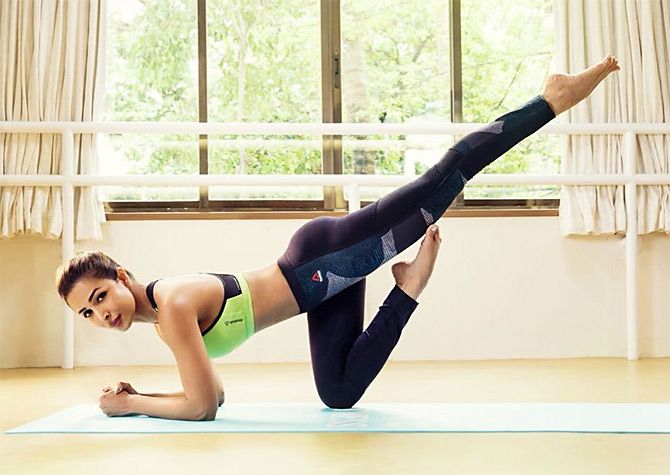
The rise in demand for group yoga classes is also a consequence of this trend.
Popular gyms such as Fitness First, Cult.Fit and Anytime Fitness offer yoga classes. Apart from gyms, speciality yoga studios are also new entrants to the expanding yoga universe.
In 2013, Sarvesh Shashi started Zorba, a chain of studios that, fascinatingly enough, offers classes in 25 different forms of yoga 'in an electric and fun atmosphere'. The studios are softly lit, with clean lines and a minimalist aesthetic.
"Yoga has shifted from the idea of a guru to a greater focus on the practice itself. It is an extension of how Indians have become more open, but with their roots and culture intact," observes Shashi.
He also discerns a significant change in the age group, with yoga becoming a lifestyle choice for those under 30.
"Yoga can become popular if you can make it sound cool," he says.
Zorba's 65-plus studios in over 35 cities offer yoga forms such as aerial yoga, chair yoga, dance yoga, brick yoga and paddleboard yoga. Shashi likes to call himself a "modern yogi".
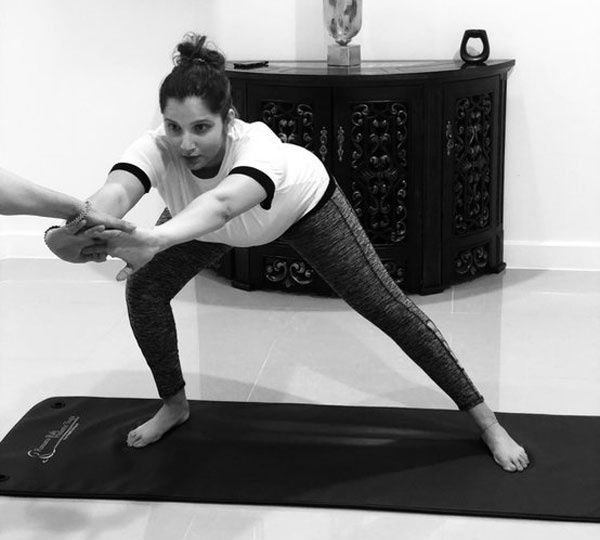
Inevitably, there has been complementary growth in the market for suitable apparel and equipment.
Exercise mats have been rechristened 'yoga mats', post-workout protein bars are now 'yoga bars' and stretchable gym tights are 'yoga pants'.
E-commerce marketplaces like Amazon have entire store categories dedicated to yoga peripherals like mats, bricks, apparel, copper bottles and ayurvedic supplements and teas.
Cutting through that clutter is Proyog, a yoga-focussed apparel brand that offers organic cotton clothing and seeks to 'deepen your yoga experience'.
It was launched three years ago on June 21 to coincide with the first Yoga Day celebration.
"Nearly 95 per cent of the apparel made for yoga is synthetic. That is essentially at odds with the practice of yoga," says Priyanktha Iyengar, co-founder, Proyog.
When it is necessary to use Lycra, Proyog wraps it in organic cotton to create a trademark fabric called HYPERBREATH. Its 'Chandra' and 'Vira' dhotis can be worn like pants and offer greater comfort and functionality for asanas.
Proyog is also in the process of designing organic yoga mats. "All this is driven by the fact that a larger number of people now want to take up yoga as a lifetime activity rather than mere exercise. I think the industry is on the threshold of something big," says Iyengar.
Some yoga studios now also feature cafes.
Instead of the traditional Indian fare, though, the food is typically repackaged to complement the newly chic aesthetic of modern-day yoga.
For instance, The Yoga House in Mumbai offers the 'Yogi's Breakfast' -- oats porridge, a shot of multivitamin juice and tea or coffee. 'The Yogi's Meal' has dishes made with trendy ingredients like quinoa, fig, yoghurt and granola.
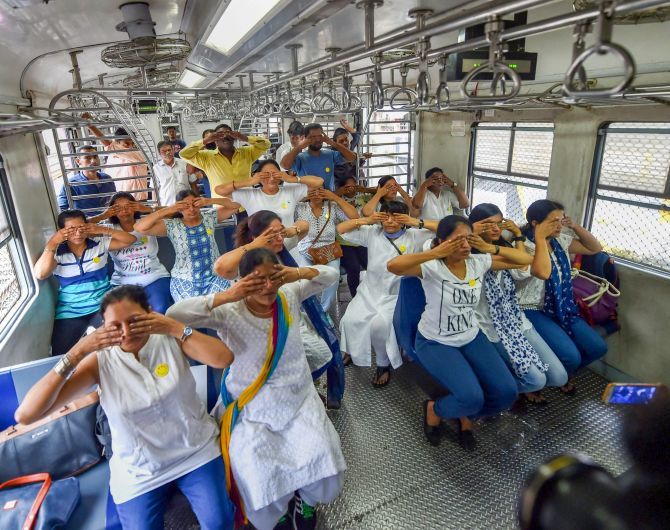
Beyond the changing aspirations and demographic, yoga's renaissance in India really owes to a concerted effort to Indianise what is already Indian.
An entire government machinery is, after all, providing a policy push.
For the Bharatiya Janata Party-led government that came to power in 2014 and was keen to build its vision for the country that was forward-looking, modern and yet nationalistic, yoga was an obvious symbolic choice and its progression only natural.
The once-obscure department of AYUSH (Ayurveda, Yoga and Naturopathy, Unani, Siddha and Homoeopathy) under the ministry of health and family welfare was elevated to a ministry in November 2014.
This year, the ministry received a 13 per cent increase in Union Budget allocation, up from Rs 14.29 billion to Rs 16.26 billion.
In its 2018 annual report, the ministry listed a special campaign to make yoga popular in the north east states as its achievement.
A dedicated body, the Central Council for Research in Yoga & Naturopathy, has been given greater autonomy.
"This is the prime minister's pet project. Usually, these projects start at the ground level and then reach the top. But the initiatives for yoga begin right at the top," says MDNIY's Singh.
Funding for yoga is sufficient and accessible, he adds.
Private sponsorships and corporate partnerships have been easy to come by, given that any yoga-related effort guarantees visibility.
"But just as its popularity rises, there is also a tussle over the question of religion," says Singh.
He cites the example of a school in Madhya Pradesh that removed the Surya Namaskar from its yoga routine because Muslim students felt it was against their religion.
"But Muslims, too, follow yoga in their own way, because they realise how their own religious practices follow certain yoga postures. Yoga is not inherently religious, but it is often made to be so, says Singh.
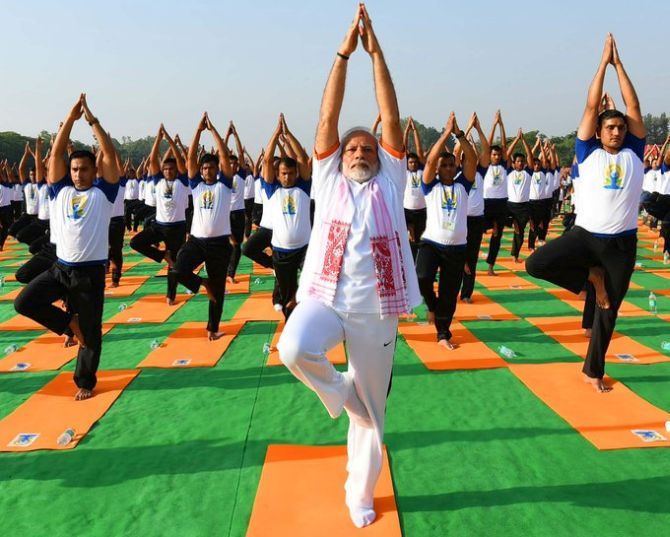
Folding religion into the narrative performs several functions.
First, it cements Hinduism's contemporary avatar and strips it of its pagan and philosophical sources.
"Yoga as Hindu is actually an oxymoron. Early yogis, such as the Samkhyas of the 1st century BC, would be burnt at the stake for heresy by the Hindus of today, especially because they placed man before God and believed that salvation lay within," points out Sunil Mehra, a founding member of the Delhi-based yoga practice, Studio Abhyas.
He believes that it is not a coincidence that the Hindu and yogic traditions practised today neglect the richly diverse heritage of the six darshanas of Hindu philosophy and follow just one, Vedanta.
The other important aspect is the promotion of the subliminal idea of a 'united', healthy and battle-ready nation.
This was perhaps first seen in the swadeshi colours of Ramdev's yoga and the global window-dressing that the Art of Living Foundation offered.
"See, yoga is not about religion. It is about being a good human being, about being a healthy person, and about taking the whole nation ahead with you," says Ajit Mahapatra, head of the cow protection and yoga promotion wings of the Rashtriya Swayamsevak Sangh.
"If someone is opposed to yoga, it is their personal view and not a reflection on the government's good works."
"Look, I don't know much about religion. But if I can show how proud I am to be Indian and also become healthy in the process, I don't mind," says the woman at the Delhi gym before her yoga class.
After a quick warm-up, she is ready to make good her intention.










